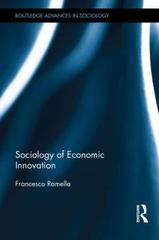Investment and Risk Management EDZIILEIIZI Tutorial 2 Economics and Investment Decisions The following information relates to Questions 15 Ed Smith is a new trainee in the foreign exchange (PX) services deparhnent of a major global bank. Smith's focus is to assist senior 17X trader, Felix Mehmet, CPA. Mehmet mentions that an Indian corporate client exporting to the United Kingdom wants to estimate the potential hedging cost for a sale closing in one year. Smith is to determine the premiumfdiscourrt for an annual {360 day) forward contract using the exchange rate data presented in Exhibit 1. Exhibit 1. Select Currency Data for GBP and INF. Spot (INRIGBP) Annual (BEGday] Libor (one) | Annual (BEGday} Libor gum Mehmet' is also looking at two possible trades to determine their prot potential. The rst trade involves a possible uiangular arbitrage trade using the Swiss, US and Brazilian currencies, to be executed based on a dealer's bidi'otfer rate quote of -5161t[l.5163 in CHFi'E-RL and the interbank spot rate quotes presented in Exhibit 2. Exhibit 2. Interbank Market Quotes CHFIU SD 0.9099Il 1 BRLIU SD 1-??90! 1.??9 2 Mehmet is also considering a carry trade involving the USD and the Euro. He anticipates it will generate a higher return than buying a oneyear domestic note at the current market quote due to low US interest rates and his predictions of exchange rates in one year. To help Mebmet assess the carry trade, Smith provides Mehmet with selected current market data and his one year forecasts in Exhibit 3. Exhibit 3. Spot Rates and Interest Rates for Proposed Cany Trade Today's oneyear Libnr Clurrency pair Spot rate Projected spot rate in one year 'cetBase tori 0 30% 1 0055 EURJCAD 0.7218 (1.?279 Finally, Mehmet asks Smith to assist with a trade involving a US multinational customer operating in Europe and Japan. The customer is a very costconscious industrial company with a All credit rating and strives to execute its currency trades at the most favorable bidlotfer spread. Because its Japanese subsidiary is about to close on a major European acquisition in three business days, the client wants to lock in a trade involving the Japanese yen and the Euro as early as possible the next morning, preferably by 3:95 AM New York time. At lunch, Smith and other PX trainees discuss how best to analyze currency market volatility from ongoing financial crises. The group agrees that a theoretical explanation of exchange rate movements, such as the framework of the international parity conditions, should be applicable across all trading environments. They note such analysis should enable traders to anticipate future spot exchange rates. But they disagree on which parity condition best predicts exchange rates, voicing several different assessments. Smith concludes the discussion on parity conditions by stating in the trainees: \"I believe that in the current environment both covered and uncovered interest rate parity conditions are in effect.\







